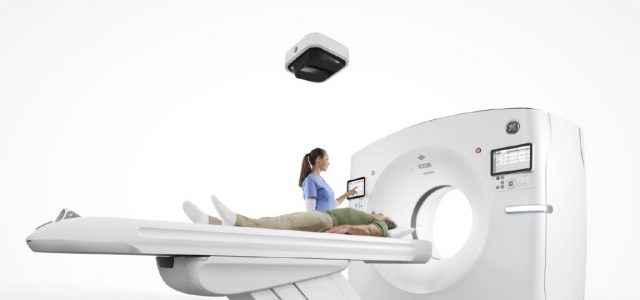Digital Transformation is often about alignment and consolidation of technical solutions and capabilities within the enterprise. We sometimes call this fragmentation, a term which is closely related to silos, pockets of excellence and cottage industries. Groups trying to adapt to changing demands by any means. The fragmentation of tech and data capabilities often leads to fragmentation in the skills and possibly the outlooks of the people delivering them. Change management and learning and development are there to transform the people side of things.
As well as consolidating the fragmented endeavours, transformation brings new capabilities and new efficiencies. There have been a number of drivers towards the fragmentation, a shift to customer centricity driving adoption of advanced analytics, new technology, increased cyber security concerns, the need for scalability and migration to the cloud. The fragmentation of tech and data capabilities leads to fragmentation in the people delivering them, and thus a lot of extra load on the learning and development function. They are supporting an ever increasing set of roles, legacy tech, new tech, certifications, soft skills, trainees, return to workers, diversity needs. It’s a lot.
Over the past few decades, there’s been significant evolution in the job market. Roles that once were umbrella terms, like ‘software engineer’, have now splintered into much more specialised Job descriptions requiring specific software skills for example. Now we need a cross functional team with a broad range of skills to ensure we can merge domain knowledge with a variety of technical skills in every solution design and every delivery. In many cases the breadth of a job description has been traded for depth. However, this specialisation brings its own set of challenges, especially in the realm of Learning & Development (L&D).
Due to the rise of microservices architectures, L&D is now juggling the needs of innumerable software products, alongside ensuring maintenance and retention of skills for the legacy systems that employees may be reluctant to engage with. Constant transformation means constant learning and constant additions to portals or change management requirements landing at the door of L&D. Coupled with this, increasing employee churn, high attrition rates and the scramble for niche skills make organizations unintentional training grounds for talents that soon become assets for competitors. Lack of skills and competing demands for the upskilling of individuals is a real risk for transformation success.
Meet Taylor our mid career L&D manager, here she is visiting a tech expo with two of the new graduate trainees. The expo has so many stands and more than a dozen ‘theatres’ for each of the specialisation areas. Its noisy and hot and crowded. The trainees, Alex & Jordan, literally don’t know where to put their eyes, there are so many vendors, cloud, graph databases, low code no code, data bricks, data lego, data mortar. Data Lake, data stream, data drop. Devops, devsecops, MLops, cyclops. Taylor is familiar with the feeling of overwhelm and being pulled in all directions. Back at the office she manages the learning portal, she advises and approves personalised training in the certification ecosystem. There is soft skills training and the organisation where she works still needs COBOL expertise, and there are the constant demands of the change managers, needing new learning paths, skills gap analysis. Taylor had been attracted to L&D because she loved seeing people thrive and strive for improvement. Often she felt like a project manager, checking lists and managing risk and timelines, partners and stakeholders.
Taylors role had certainly not stood still. Alex & Jordan were entering industry at a time when change had never been faster and was guaranteed to accelerate further.
The trainees had been buddies at university and were glad to have stayed together, Alex the serious one wanted to specialise, she was going to conquer data engineering and model herself as the ‘go to expert’. Jordan on the other hand was less meticulous and wanted to shape products and services, to learn about how tech integrated into people’s individual lived experience, he wanted to know a little bit of everything, and he wanted the learning aspect of that to be fun and engaging. Alex didn’t mind about that, for her long hours of experimenting, getting it wrong and knocking an idea into shape through trial and error gave her joy.
For Taylor that moment at the expo revealed not only the innovations but also a reminder of the disparate learning needs and paths that the individuals in her organization walked. She saw the necessity of creating an L&D environment that didn’t enforce a rigid path but rather offered a multitude of avenues, allowing each individual to curate a journey that resonated with their inherent strengths, curiosities, and aspirations.
As luck would have it the enterprise that they work for is forward looking, and as part of their ‘develop the agile organisation’ Taylor and her boss were implementing the Personal Learning Pathways programme in the L&D dept. It was its own transformation and part of a larger HR transformation involving alignment to roles and responsibilities within the new Target Operating Model.
Back at the office we had left Casey. Casey had enjoyed a long career in financial tech but really wasn’t sure about coming to the expo, all the change was overwhelming. Casey had never wanted to go into management, but he was not ready to stop work just yet.
The expo delegation decided to listen to an expert speaking in the L&D theatre about best practice – here is the summary of what he said.
“Today, we stand at a digital crossroads,” the speaker’s voice echoed through the hall, “where technological evolution beckons and reaches into every facet of our professional lives. Whether it’s emerging microservices disrupting our technical stack, or the invisible threads of AI weaving through our data, we are all journeying through a digital transformation. But how do we ensure this journey is inclusive, adaptive, and, most crucially, human?”
The speaker dove into the tenets of T-shaped and generalist learning, the need for deep specialization co-existing with cross-domain understanding. “The T-shaped professional brings to the table a depth of expertise, grounded with a peripheral understanding of adjacent domains. Meanwhile, the generalist dances through varying disciplines, enabling cross-pollination of ideas and practices,” they continued, images of vast technological landscapes and interconnected nodes flickering behind them.
“For the seasoned professionals among us,” Taylor thought about Casey, “your journey may seem sidelined by the digital zeitgeist, yet your expertise forms the bedrock upon which new technological strategies are built. Embracing a Pi-shaped learning pathway can ensure your evolution along with the digital tide.”
Since you didn’t see those slides let me summarise those ideas for you.
The modern enterprise needs to recognise different types of learning pathways, we need to foster a culture where learning is not a mandated directive but an intuitive, self-driven pursuit. Continuous learning allows unique combinations of skills that reflect not only historical projects but aspirations and ambitions.
T-shaped learning refers to acquiring deep, specialized knowledge in a particular area (the vertical bar of the T) while also developing a broad, albeit more shallow, understanding of a wide range of disciplines (the horizontal bar of the T). This approach allows an individual to become an expert in one domain while maintaining the capacity to communicate and collaborate across various other areas.
A generalist, on the other hand, operates primarily along the horizontal bar, possessing a wide-ranging knowledge across multiple areas but without delving deeply into a specific one. This breadth allows them to navigate multiple domains with ease, often serving as a bridge across specialized silos.
A ‘Pi-shaped’ learning path (combining the depth of T-shaped learning with an additional vertical expertise) might be considered. Here’s how:
- Deepening Expertise: Continuing to deepen expertise in one area for example financial data management and analysis, ensuring that the foundational skillset remains robust and updated.
- Broadening Horizons: Acquiring a fundamental understanding of emerging technologies and methodologies like data science, analytics, and possibly, machine learning, which are becoming increasingly intertwined with finance.
- New Vertical: Developing a new depth of expertise in an area that intersects with existing skills — for example, financial data analytics or financial technology (FinTech).
As the expert’s voice trailed off, the L&D theatre was stilled by a moment of contemplative silence. Taylor realized that this transformative journey wasn’t just about new technology or shiny tools; it was about recognizing the heart of digital transformation – the people.
Reflecting on the day’s lessons, Taylor was more convinced than ever about the importance of individualized learning in their digital transformation strategy. She thought about the fragmentation brought about by customer centricity, advanced analytics, cyber security, cloud migration, and countless other initiatives. The evolving technological landscape had, inadvertently, led to the splintering of roles, but it had also presented a unique opportunity. An opportunity to bridge these divides through tailored learning pathways.
She envisaged a future where every individual’s learning journey was as dynamic and unique as them. A future where the enterprise wasn’t merely reacting to change, but was proactively shaping it by nurturing its most valuable asset: its people. The modern enterprise’s task was to provide the tools, resources, and most importantly, the environment where Alex’s dedication to specialization, Jordan’s pursuit of broad understanding, and Casey’s deep-rooted expertise would combine through collaboration, driving the organization forward.
Digital Transformation is as much about people as it is about technology or process. With the right approach to learning and development, we can ensure that every individual, irrespective of their role or expertise, can not only survive but thrive in the target world.
Article by channel:
Everything you need to know about Digital Transformation
The best articles, news and events direct to your inbox
Read more articles tagged: Learning & Development






